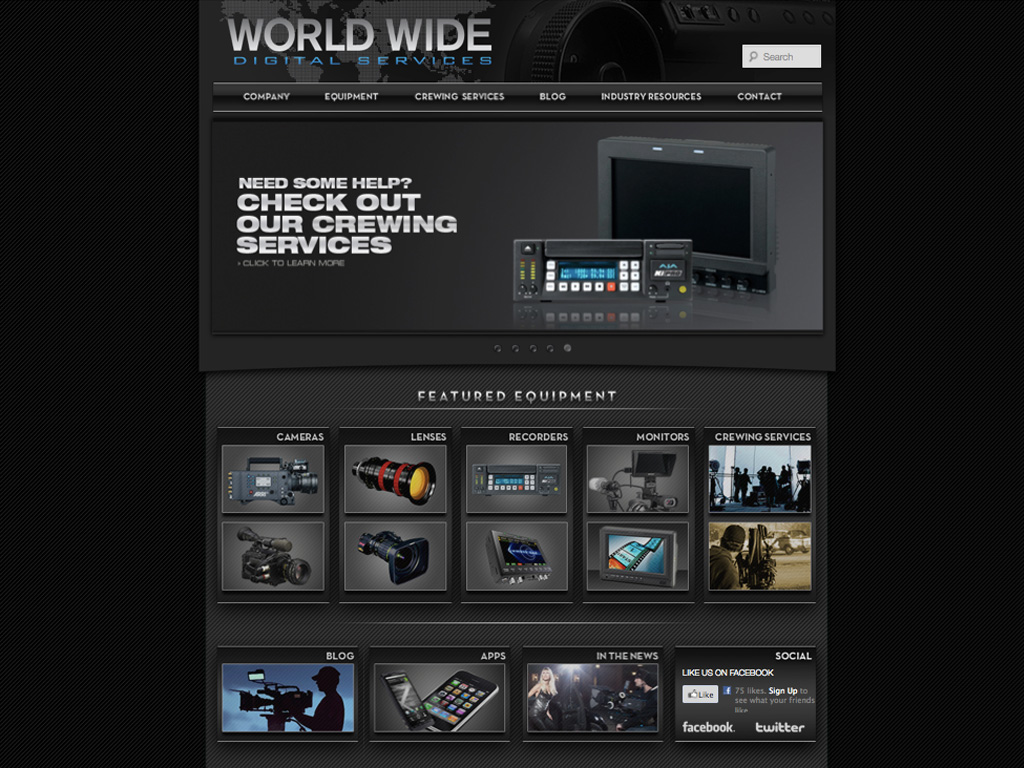Design, it’s totally and completely inescapable and impossible to overlook.
In publishing eras past, it was an afterthought. Content was first and foremost and appearance a secondary or tertiary concern. If you’re shaking your head thinking, “Content is still king,” I’ll touch on that in a moment. But over the course of the last century or so, there’s been a shift in focus between the two, and that much is evident in the changes we’ve seen with newspapers, and how front page formatting has evolved over time. There are a lot of reasons as to why this his happened, but I’d like to focus on how reader demographics have changed, as have their reading habits, without oversimplifying everything else. Because we consume information significantly differently than we did five, ten and fifteen years ago, organization has been changed to facilitate and streamline that process. The slideshow below shows how The Los Angeles Times has changed since its first edition from a paper crammed to the brim with information to something more cogent and palpable for readers.
“The Los Angeles Times” Headlines from Bravo Design, Inc.
Online, a website’s design is just as important as its content, if not more so, and can be the difference between a visit and a pass or a qualified lead versus an unacceptable bounce rate. To be clear, when I say web design, I’m not just referring to its aesthetics. I also mean its usability. Yes, content will drive traffic and have visitors coming back for repeat visits, but most guests won’t stick around initially if your page is difficult to navigate through or you’ve used GeoCities to build your business page. That’s not actually possible since the service is defunct. And yes, there are always exceptions to the rule, but you know what I’m getting at. There’s a direct correlation in increased conversion with a well crafted website, even if it has its shortcomings, and subpar metrics with one that’s poorly designed. This tidbit of advice isn’t esoteric. It’s money in the bank with real world application.
So what do you do? You build better. Sure, you can use your site but can your guests? If you paused for even the smallest of moments before answering that question, listed below are web design considerations you should mull over.
First and foremost, consider your goal(s). I can’t stress this point enough. What do you want from your website? Are you looking to increase readership for your fratire blog or are you selling <insert anything> or just schooling the general public on your service offerings? In Alice in Wonderland, there’s an exchange between Alice and the Cheshire Cat that’s paraphrased: “If you don’t know where you’re going, any road will get you there.” The quote is all-applicable to life, love and, most of all, your website. Figure it out and then plan accordingly, then plan some more and then execute.
Who’s going to be using your site and how will they be using it? Web content and print content are totally and entirely not the same, so you’re going to have to tailor your writing style to the demographic you’re targeting with their browsing habits in mind. Remember, no one (including marketers) likes marketese so try not to write that way. Next, ask yourself if you’re being engaging? Good design and substantial content will draw users in, which makes them want to connect with you. Without personality, your visitors aren’t going to feel compelled to stay, and this can be detrimental to your conversion rates in the long run.
Manage attention and try to not squander user patience. Two points to think about are lowering barriers to pave the path of least resistance and not providing too many options. The less action that’s required for a visitor to access your site, the better. First-time users who want to read an article or peruse through your site probably aren’t going to want to fill out contact forms or register accounts, and are apt to bounce when confronted with the like, so don’t make them do that. Second, if you’re offering way too many choices, your average user is going to have a difficult time making up their mind. That’s the difference between going to a restaurant that has what seems like an endless menu with samplings from each and every continent and going to one that serves three different kinds of hot dogs.
Last but not least, simplify. This point, though seemingly intuitive, is often the hardest to apply. The best designs speak for themselves, and as Dieter Rams said once upon a time are “as little as possible.” With minimal or no instruction, a child should be able to use it. You don’t have to reinvent the wheel here. You just need to focus on the essential while pruning away everything else.
If you’re still shaking your head, when it comes to content versus design, I’ll cede that they’re equally important, but that’s all. You can leave a comment below if you fervently disagree. If you’re thinking about shopping around for web development assistance, we have a write up listed in our design blog, which might help out in your search. When I initially wrote the entry, I forgot to include that the expert you hire should be SEO savvy, but you already know that. Just remember that the best designers are translators who can turn a vision into something tangible and that our portfolio is also pretty groovy.
If you’d like to download this entry in Word format, click here: Content versus Design.
Photo Credit: Tactile Design Group

 Despite the fact that consumers generally indicate that they make rational purchasing decisions based on considerations like price, selection or convenience, subconscious forces, involving emotion and memories, are clearly also at work. Scientists used to assume that emotion and rationality were opposed to each other, but
Despite the fact that consumers generally indicate that they make rational purchasing decisions based on considerations like price, selection or convenience, subconscious forces, involving emotion and memories, are clearly also at work. Scientists used to assume that emotion and rationality were opposed to each other, but  Brand development and maintenance demands a combination of functional, operational and psychological elements to create a unique entity that has a lasting personality, which will build retail brand awareness with existing and potential customers. When a brand has a well-defined personality, consumers interact with it and develop a relationship that can influence individual attitudes and behaviors in terms of how consumers perceive and react to a brand. A successful retail brand will help to build long-term demand, add some perceived value and ultimately improve sales. Consumers will be willing to pay more for a brand if there is added actual, or perceived, value from their experience of using the product or service. Because ultimately, they’re purchasing a total experience consisting not only of the physical item but also the packaging, after sales services, promotions and image.
Brand development and maintenance demands a combination of functional, operational and psychological elements to create a unique entity that has a lasting personality, which will build retail brand awareness with existing and potential customers. When a brand has a well-defined personality, consumers interact with it and develop a relationship that can influence individual attitudes and behaviors in terms of how consumers perceive and react to a brand. A successful retail brand will help to build long-term demand, add some perceived value and ultimately improve sales. Consumers will be willing to pay more for a brand if there is added actual, or perceived, value from their experience of using the product or service. Because ultimately, they’re purchasing a total experience consisting not only of the physical item but also the packaging, after sales services, promotions and image.